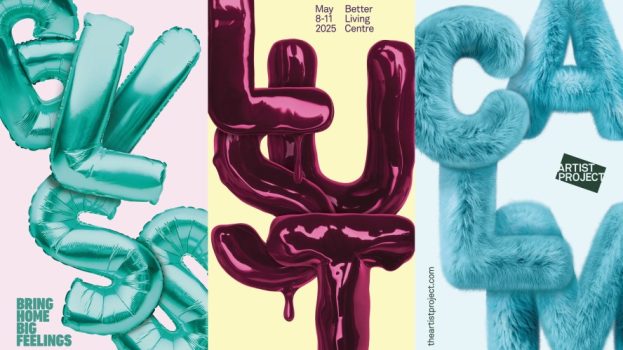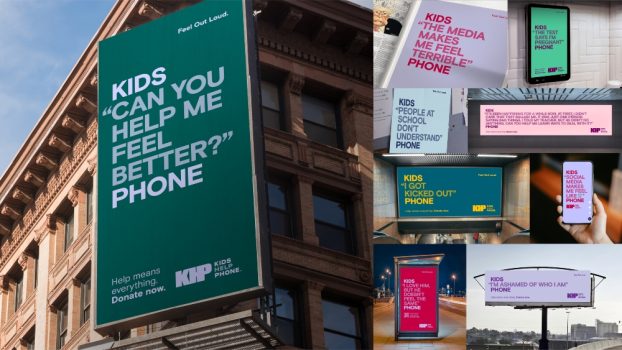Nexopia. Piczo. Habbo. Friendster. If these words are just gibberish to you, you may be missing a big chunk of the youth demographic.
These are all names of popular teen cyber hangouts that hundreds of thousands of Canadian kids visit regularly.
Social networks, blogs and video games are all hot online activities right now. But teens are a notoriously fickle bunch, and if your ad comes off as a try-hard poseur or reeks of corporate lingo, you’re not going to score any points for finding the latest online it spot.
‘Marketers are ignoring good old-fashioned creative [online],’ says Jay Aber, president of online marketing solutions company 24/7 Canada. ‘In this space, marketers are spending more time on the actual placement than the message, creative and offer.’
So, how do you get it right? Hooking up with a partner in the know certainly doesn’t hurt. Canadian brands like Dentyne Ice, Nintendo, Doritos, Alesse, West 49 and Oh Henry have all tapped into MuchMusic’s cool factor by setting up microsites on the popular music station’s Web site. And these aren’t just static sites with logos slapped on top of taglines. These microsites are updated often and offer up contests, quizzes and games.
As more and more online trends come and go, the trick is to figure out which ones are here to stay, and how you can get a piece of the action. Social networks, instant messaging, blogging, vlogging (video blogging), viral, gaming – it’s hard to keep up! Here’s a rundown of what’s going on with the latest online marketing opportunities, and some examples of who’s doing things right.
Social Networks: All the rage
Friendster, My Space, Nexopia, hi5 and CHUM’s Habbo Hotel are all popular ways for Canadian youth to check out their friends, their friends’ friends, their friends’ friends’ friends and so on. Nexopia and the Habbo Hotel have a Canadian presence, while California-based Friendster has just started talking to Canadian marketers about tapping into the network’s ‘couple hundred thousand’ Canadian users, according to Joe Hurd, Friendster’s director of international
business development.
Social networks boast databases full of highly detailed user profiles, allowing them to offer marketers access to very specific demographics. ‘The targeting we can do is phenomenal,’ says Edmonton-based Nexopia’s commercial manager Rob Davy. Nexopia has 330,000 registered Canadian users (average age: 17.05), and 100,000 visit the site at least once daily. Nexopia and its agency 24/7 Canada have run targeted banner ads for marketers including Virgin Mobile (target: Western Canada), and West 49 (target: 18+ females in Western Canada). The site recently ran a contest with Toronto-based Universal Music Canada, and Davy plans to eventually have regular sponsors run promotions on a contests page. The site is strict about how far its advertisers can go: Its content is all created by users, so the forum and profiles are off limits.
Friendster, however, lets select marketers get into the social network through sponsored profiles. Respectable advertisers only, Hurd says, although Pamela Anderson does get her own blog and profile to promote her new TV show, Stacked. Users can add sponsored profiles to their networks and become a ‘fan of’ Pam, or other celebs. Sponsored profiles are primarily used for entertainment marketers, but Hurd reports that Friendster is currently in talks with a cosmetics company. So users can potentially become a ‘fan of’ a latest product. Once users add a sponsored profile to their networks, they’ll receive special offers and updates.
Meanwhile, CHUM’s Habbo Hotel (created in partnership with Sulake Canada), is an online community for Canadians 13-20. The network currently has over 300,000 registered users. Sprite recently set up a branded environment dubbed ‘Club Thirst,’ a virtual nightclub hosted by the brand’s animated rep Mr. Thirst. (See case study.)
Blogs & Dynamic Online Gaming: Not quite there yet
While the media is abuzz about blogs, Canadian marketers haven’t quite figured out how to tap into them yet, notes Tribal DDB’s Toronto-based associate CD Dre Lebre.
In the U.S., though, marketers are already getting in on the action. Procter & Gamble is running a blog to promote its new Sparkle body spray, presumably to teenage girls. (P&G Canada won’t say whether they’ll be following suit.) Also stateside, Ford has signed on to sponsor the U.S. version of MSN Spaces (launched in Canada on April 7), which allows users to create and maintain their own blogs. While 500,000 Canadians have signed up, no Canadian sponsors are on board yet. ‘I see a lot of potential in blogging and marketing,’ says Lebre. ‘It’s a great participatory tool.’
Getting involved with blogs may get easier soon thanks to the launch of Pajamas Media by U.S. political bloggers Charles Johnson, Marc Danziger and Roger L. Simon. It’s a corporate advertising service, which plans to sell ads for blogs en masse.
Meanwhile, in-game advertising is ideal for reaching that elusive male youth demo. And marketers can now run highly targeted, dynamic in-game ads. New York-based advertising network Massive recently signed 12 U.S. advertisers for dynamic product placement (which allows advertisers to update ads) in video games like Ubisoft’s Splinter Cell: Chaos Theory and Funcom’s Anarchy Online. Advertisers already signed up include Paramount Pictures, Nestlé, Honda and Dunkin’ Donuts. Alas, no Canadians – yet.
Martin Carrier, director of communications and public affairs at game publisher Ubisoft’s Montreal office, explains that online game consoles like Xbox can allow advertisers to tap into player profiles to target based on age, sex, location and even interests. And, the online connection allows advertisers to update content. So, Paramount Pictures can purchase in-game billboard space, and update it according to which movie it’s promoting.
Taking it one step further, Sony has teamed up with Pizza Hut, and built the ability to order pizza into its latest game, Everquest II. All the player has to do is type in the command ‘/pizza,’ and voila – Pizza Hut’s online order page pops up. While it’s just pizza now, the in-game purchasing potential is wide open.
We found three examples of Canadian brands ahead of the pack when it comes to marketing to the teen demographic online. See their stories on the following pages.























